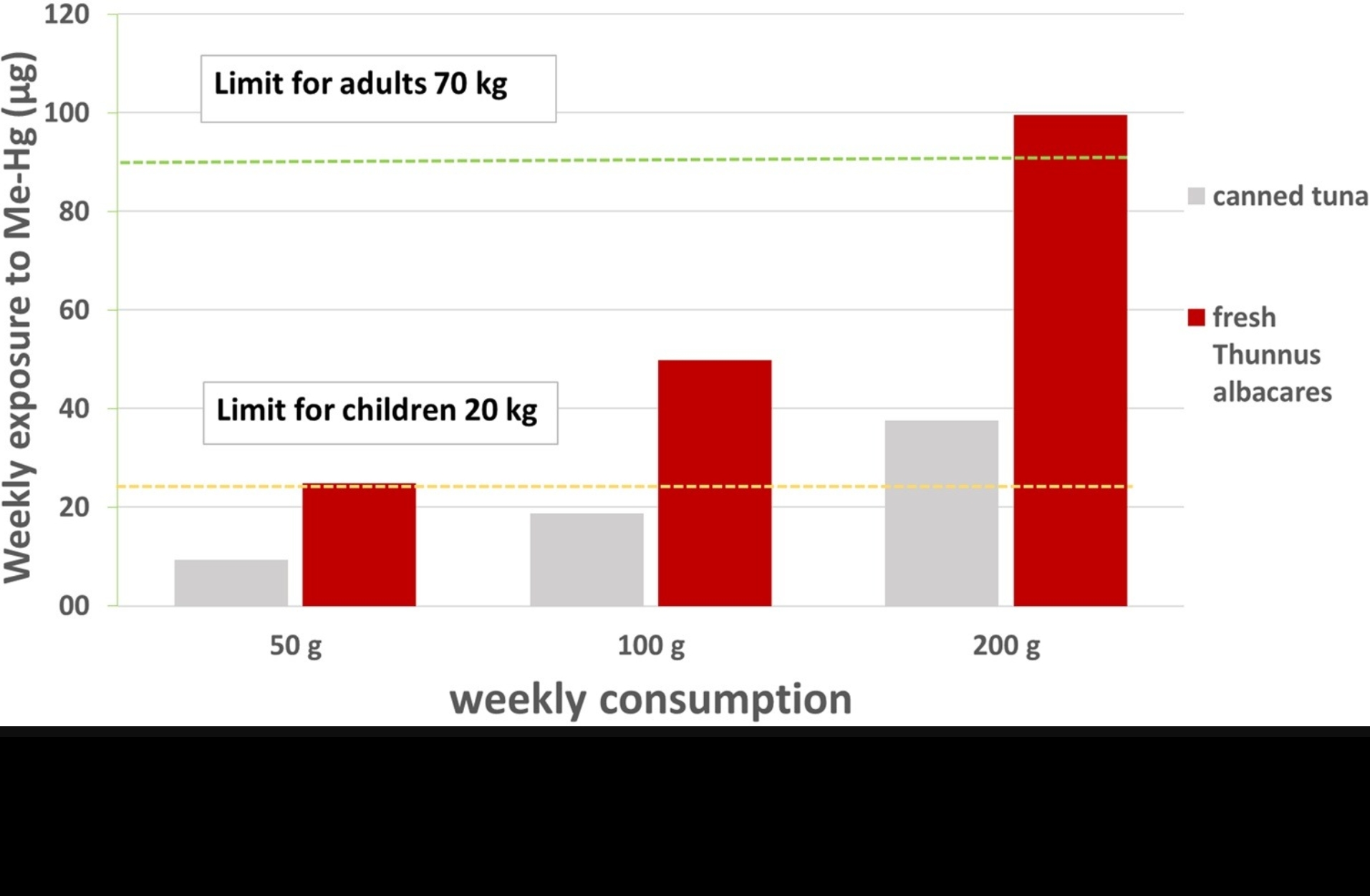Lead, cadmium and mercury in canned and unprocessed tuna: six-years monitoring survey, comparison with previous studies and recommended tolerable limits
Oto Miedico Journal of Food Composition and Analysis Volume 94, December 2020,
Highlights
• Quality control of Pb, Cd and t-Hg were carried out by ICP-MS in 108 tuna samples
• Data analysis and comparison with similar studies confirm high accumulation level of Hg
• Me-Hg exposure can reach levels above the tolerable intake for sensitive age-groups
Fishery products, in particular those belonging to tuna species, widely present in the human diet, may represent a toxicological issue because of the level of contamination by heavy metals (e.g., lead, cadmium and mercury) and the average per capita consumption. Control of food safety is one of the pillars to the public health safeguard, therefore the official laboratories are in charge of checking the compliance of food products with quality standards for these toxic elements.
From 2014 to 2019, 108 tuna samples, canned or unprocessed, were checked at the laboratory of the Istituto Zooprofilattico Sperimentale della Puglia e della Basilicata (Italy). One canned tuna was non-compliant for cadmium (0.22 mg kg-1), and twelve fresh tuna samples (11% of total) showed mercury content above the permitted level. Mean mercury concentrations in fresh and canned tuna (0.517 and 0.207 mg kg-1, respectively) confirm that this element represents a serious toxicological issue.
Exposition to mercury, and markedly in its organic form, due to tuna consumption, was found to be significant and may pose a risk for the most sensitive consumer groups (i.e., children).














